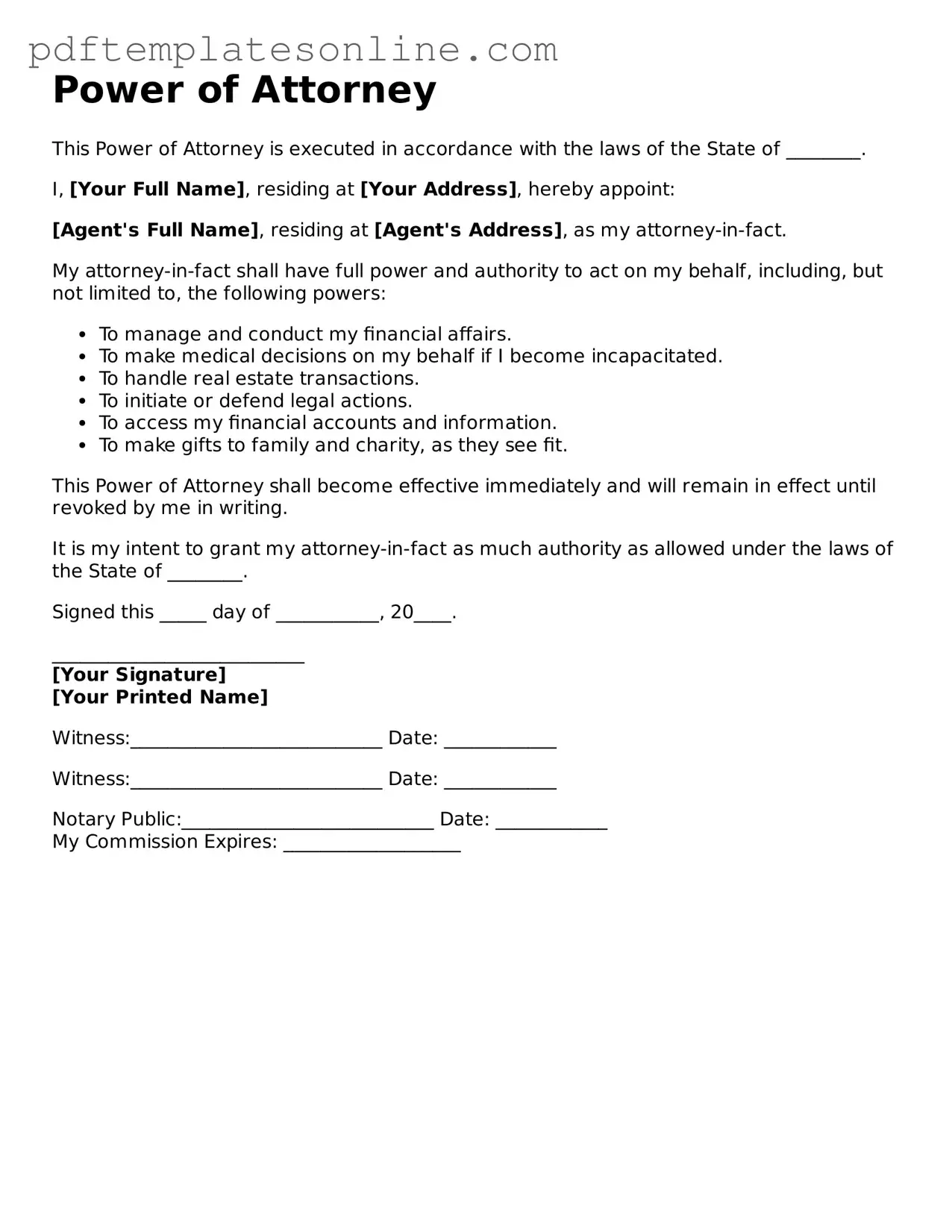Filling out a Power of Attorney (POA) form can be a straightforward process, but many individuals make common mistakes that can lead to complications. Understanding these pitfalls can help ensure that the document serves its intended purpose without issues.
One frequent mistake is failing to specify the powers granted. A Power of Attorney can be broad or limited, depending on what you want to allow the agent to do. If you do not clearly outline these powers, the agent may not have the authority to act on your behalf in critical situations. Always take the time to specify whether the agent can handle financial matters, medical decisions, or both.
Another common error involves not signing the document properly. A Power of Attorney typically requires your signature, and in some states, it may also need to be witnessed or notarized. Omitting this step can render the document invalid. Ensure that you follow your state’s requirements for signing and witnessing.
Many people also forget to date the form. A date is essential as it indicates when the Power of Attorney becomes effective. If there is no date, questions may arise about the validity of the document, especially if it is contested later. Always include the date when you complete the form.
Inaccurate personal information is another mistake to watch out for. Providing incorrect names, addresses, or other identifying details can create confusion and legal challenges. Double-check all information for accuracy before finalizing the document.
Not considering alternate agents is a mistake that can have significant consequences. If the primary agent is unable or unwilling to act, having a backup agent ensures that your wishes will still be honored. It’s wise to name at least one alternate agent in the form.
Some individuals neglect to discuss their wishes with the appointed agent. A Power of Attorney is not just a legal document; it represents a trust placed in someone to make important decisions on your behalf. Open communication about your desires and values is crucial for the agent to act in accordance with your wishes.
Lastly, failing to review and update the Power of Attorney can lead to problems down the line. Life changes, such as marriage, divorce, or changes in health, may necessitate updates to the document. Regularly reviewing your Power of Attorney ensures that it reflects your current situation and intentions.
